#Benjie Bernal
Text
Lady Bird, Greta Gerwig’s Coming-Of-Age Triumph

by Benjie Bernal
edited by Dane Santiago
In a car ride just after finishing an audiobook of John Steinbeck’s “Grapes of Wrath,” viewers are immersed into the mundane life of Christine McPherson (Saoirse Ronan), and her mother, Marion (Laurie Metcalf). “I wish I could live through something,” Christine states, to which her mother indifferently replies: “Aren’t you?” This starts a heated exchange which highlights the differences between the mother and the daughter. Christine, full of optimism, argues that she wants to go to college in the east coast (all while reiterating her need to be called ‘Lady Bird’), while her mother frankly reminds her of their family realities, injecting realism into the discussion. As the exchange goes on, Marion, the more headstrong of the two, comes up with a barrage of belittling comments, and Lady Bird, realizing she’s had enough, unbuckles her seat belt, opens the car door, and jumps off the moving car.
This opening scene sets up the light-hearted and humorous tone that would resonate throughout the movie. And I love how, in just that opening scene alone, the distinctions between the two characters’ personalities were already made abundantly clear. Lady Bird wants to get out of her humdrum life, but she will find that her mother—in a realistic depiction of parental love, that is, with good intentions but often coming off as antagonistic—will be holding her back.

With that, Lady Bird will embark on the emotional cyclone that is senior year—while having this ironic ability to be selectively reckless in her decisions in an attempt to make the most out of the remainder of her high-school chapter. But being the unsure teen that she is, she’s conflicted about what kind of person she wants to be; she muses on whether she wants to be ‘all cool and hang out with the cool kids,’ or whether she will be sick of their pretentiousness and accept the weirdness that is her best friend. The resulting interactions with the members of her high school involve dialogue that’s quirky, awkward, and oftentimes downright inappropriate, and director Greta Gerwig makes it work flowingly with her wonderful demonstration of how young, curious and immature characters interact while also depicting relationships as temporary, ephemeral, volatile, wonderful, and stupid.
At the end of the movie, Lady Bird and her parents bring her to the airport to embark on the plane to college. Marion, with all her pride and stubbornness, refuses to greet her goodbye, only for her tender, motherly side to give in as Lady Bird drives away. Of course, being a shy too late to console, she breaks down in her husband’s arms. This scene is a great testament to the psychological depth Greta Gerwig has managed to depict throughout the movie, which also wouldn’t have been without Laurie Metcalf as well as Saoirse Ronan’s astounding performances. They’ve portrayed their strong-willed characters with such distinction and clarity; their characters’ contradicting motives make every interaction so intense yet still filled with the striving to empathize with each other.
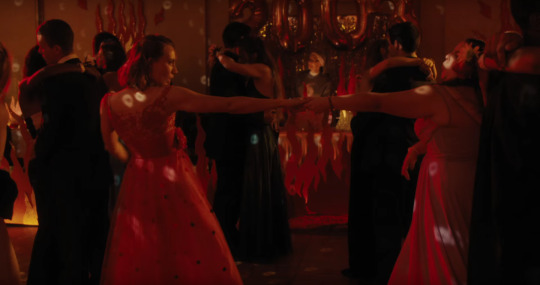
As much as this plot resembles an archetypal coming-of-age story, Lady Bird set itself apart with its odd, even poignant dialogue—filled to the brim with humor and character peculiarities—which shows the immense depth that enabled the film to be a near-perfect dramatization of what it feels like to live through seemingly romanticized situations while subtly subverting it through a realistic and relatable portrayal on-screen.
In this year’s Academy Awards, Lady Bird received numerous nominations in categories such as: Best Picture, Best Director, Best Actress, Best Supporting Actress (I mean seriously, Laurie Metcalf killed it) and Best Screenplay. Although it did not bag any awards in the end, many audiences including myself still consider Lady Bird an achievement—being such a lively coming-of-age tale, with its ability to touch hearts with its honesty, comedy and originality
Photo sources: 1 2 3
1 note
·
View note
Photo


Back at Stafford House, Sir Benji is chatting with faithful man-servant, Bernal.
Previous
Next
#MKATSONP#ts3 medieval#ts3 story#ts3 comedy#medieval#sims 3#sims 3 comic#sims 3 medieval story#Praaven#sims 3 praaven
15 notes
·
View notes
Text
GMA Network rewards its viewers with superior and world-class 2017 program launches
GMA Network soars even higher this 2017 as it delivers a new roster of trendsetting and pioneering programs that will surely excite and captivate the hearts of Kapuso viewers.
Produced by the GMA Drama Group, these shows are top billed by only the brightest, hottest and up-and-coming Kapuso actors and actresses in Philippine show business.
First on the list is the original primetime soap Meant To Be. This romantic-comedy series revolves around Billie, portrayed by Barbie Forteza, a struggling millennial who meets four guys with different nationalities: Ken Chan as the Chinese-Pinoy Yuan, Jak Roberto as the Pinoy Macoy, Ivan Dorschner as the Fil-British Ethan, Addy Raj as the Indian Jai. All four boys will fall in love with Billie. Joining them in Meant To Be are Manilyn Reynes, Sheryl Cruz, Tina Paner, Keempee de Leon, Sef Cadayona, Mika dela Cruz, Stephanie Sol, Zymic Jaranilla, and Ms. Gloria Romero. Under the helm of LA Madridejos with Renei Dimla as head writer and Hazel Abonita as Program Manager, Meant To Be premiered last January 9. The primetime series is also a clear winner in nationwide ratings after consistently beating its competition during its pilot week.
For its Valentine offering, the Kapuso Network brings to light the much awaited soap Destined To Be Yours starring the phenomenal love team—Alden Richards and Maine Mendoza. In the story, Alden breathes life to the character of Benjie, a hardworking and charming architect who wants to acquire a piece of land owned by the family of Sinag played by Maine. Sinag is a loving daughter who works in a radio station in their province. She deeply cares for the environment and the community she belongs to. Anticipation is high for the first ever primetime soap of Alden and Maine which will definitely be an exciting treat for viewers of all ages. Completing the powerhouse cast are Lotlot de Leon, Gardo Versoza, Dominic Roco, Sheena Halili, Ina Feleo, Juancho Trivino, RJ Padilla, Koreen Medina and Boots Anson-Roa. This also marks the comeback of Ms Janice de Belen to the Kapuso Network. After her successful directing stint on the big screen, budding female director Irene Villamor gets her first and biggest directorial job on the small screen as she sits at the helm of this heart-warming primetime show. Des Garbes-Severino is the head writer while Camille Hermoso-Hafezan is the program manager.
Soon to soar viewership ratings is the much-awaited Pinoy remake of the hit Koreanovela My Love From The Star. Ultimate Star Jennylyn Mercado reprises the immensely popular character of Steffi, the popular, beautiful and sought-after actress and endorser. And for the character of Matteo, the extremely intelligent yet cold extra-terrestrial being, GMA Network introduces newest Kapuso actor and heartthrob Gil Cuerva who auditioned for the role. Joining them are Gabby Eigenmann, Glydel Mercado, Christian Bautista, Jackie Rice, Renz Fernandez, Spanky Manikan, Melissa Mendez, Nar Cabico. And to give her own interpretation of My Love From The Star is acclaimed TV and movie director Bb. Joyce Bernal. Des Garbes-Severino is the head writer while Cathy Ochoa-Perez is the program manager.
In line with GMA Network’s Lipad 2017 battle cry, Kapuso viewers are in for something grand and spectacular this year with the launch of Mulawin vs. Ravena. This telefantasya is the biggest production of GMA this 2017 as it presents a one-of-a-kind and extraordinary primetime masterpiece. Mulawin vs Ravena is headlined by Drama King Dennis Trillo. Making this primetime offering extra special is Ms Regine Velasquez-Alcasid as she joins her first-ever full length telefantasya. Featuring the hottest young Kapuso love teams Miguel Tanfelix and Bianca Umali; Derrick Monasterio and Bea Binene. Completing the star-studded cast are Chynna Ortaleza, Dion Ignacio, Winwyn Marquez, Kiko Estrada and Roi Vinzon. And to helm this ground-breaking program are two of GMA’s acclaimed directors Dominic Zapata and Don Michael Perez who is also the head writer of the series. Helen Rose Sese is the program manager of Mulawin vs Ravena.
GMA-7 offers a compelling drama to its Afternoon Prime block with one of Regal Films’ blockbuster movies in 1987 Pinulot Ka Lang Sa Lupa. Set to premiere on January 30, the series is headlined by Julie Anne San Jose, Benjamin Alves, Martin del Rosario and LJ Reyes. With equally important roles are Ara Mina and Ms. Jean Garcia. Joining them are Victor Neri, Allan Paule, Geleen Eugenio, Lharby Policarpio. Directed by Gina Alajar, Pinulot Ka Lang Sa Lupa tackles the life struggles of two women intertwined by lost love. Ali Nokom Dedicatoria is the program manager while Marlon Miguel is the head writer.
Showcasing a story of love, triumph and forgiveness is the original Afternoon Prime series Legally Blind. Kapuso actress Janine Gutierrez tackles her most challenging and mature role as a rape victim who gets blind and who will become a lawyer to seek justice from her perpetrator. She will be paired with two of the Network’s talented leading men: Mikael Daez, Rodjun Cruz. Adding star power to the Afternoon Prime soap are Chanda Romero, Lauren Young, Marc Abaya. Legally Blind is under the helm of actor and TV director Ricky Davao with Christine Novicio as head writer and Redgynn Alba as program manager.
Another intriguing drama that will surely make the viewers’ glued to their televisions screens is the remake of the successful TV series Impostora. It is also the first GMA-produced TV drama adapted by a foreign country. This soap tells the story Nimfa, an ugly street vendor who willingly undergoes surgery and complete facial reconstruction to pretend to be Rosette, a wealthy and beautiful but unhappily married wife seeking to escape her husband. This highly controversial drama is top billed by Kapuso versatile leading lady Kris Bernal and playing opposite her are versatile actors Rafael Rosell and Ryan Eigenmann. Impostora is under the direction of Albert Langitan with Denoy Punio as head writer and Anthony Pastorpide as the program manager.
GMA Drama unveils another original show using the elements of interview, dramatization, actual videos and photos with Case Solved. Kapuso Primetime King Dingdong Dantes is tapped to host this newest docu-drama as he presents to the viewers the know-hows of crime prevention. Under the helm of Direk Albert Langitan, Loi Landicho is the head writer while Nini Matilac is the program manager.
GMA Network continues to offer all-out entertainment as it brings in new shows and adds flavour to its trademark programs.
Beginning January 15, Sunday afternoons will never be the same as the Kapuso Network brings one-of-a-kind entertainment to its loyal viewers with an exciting and fun game show People vs. The Stars. Hosted by the delightful power couple Drew Arellano and Iya Villania, the program allows celebrities to play for a chance to win two hundred thousand pesos (P200, 000.00) via a variety of eight (8) mind-boggling questions with respective cash values. If the stars fail to answer any of the questions correctly, the question’s cash value will be given to the televiewers by answering the “People Question of the Week” through text. People vs. The Stars is directed by Rico Gutierrez.
Celebrity Bluff, the multi-awarded comedy game show on Philippine television, returns to Filipino homes for a bigger and amazingly fun new season. This all-original game show will be hosted once again by award-winning game show host, comedienne and actress Eugene Domingo and award-winning actor and TV host Edu Manzano as the Master Bluffer. Celebrity Bluff promises to deliver wholesome fun, laughter and thought-provoking information for the whole family not as a weekly game show but a daily afternoon fare.
Full House Tonight is another pioneering weekly comedy-musical show top billed by Asia’s Songbird Regine Velasquez-Alcasid. The outrageously hilarious program unleashes a powerhouse ensemble of comedians, actors and musical artists all set to give Saturday nights a whole new experience beginning February 18. Full House Tonight showcases the sultry Solenn Heussaff, teen idols Miguel Tanfelix and Bianca Umali, all around performer Joross Gamboa and comedians Philip Lazaro, Nar Cabico, Tammy Brown, Terry Gian, Sarah Pagcaliwagan and Kim Idol.
GMA Network's Heart of Asia will bring Korea's best drama series this 2017.
The Big One, which will air beginning January 23, is about two doctors trying to save Seoul from a natural disaster and Pretty Woman, a love story that stars Hwang Jung-eum, Park Seo-joon, Go Joon-hee, and Choi Siwon.
Meanwhile, extra-terrestrial and supernatural teenagers will also take over the morning block, with adventure series Lightning Point and Wolfblood.
Kapuso viewers are in for a fantastic treat as GMA brings the blockbuster films to be aired on free TV. These include Jurassic World, Furious 7, American Sniper, Mad Max: Fury Road, San Andreas, Minions, Imagine You & Me, and Enteng Kabisote and the Abangers.
Viewers can only expect better and more innovative programs from GMA Network with the other program launches to watch out for this year including I Heart Davao, D’Originals, Daig Kayo Ng Lola Ko, Project Achieved, Lip Sync Battle Philippines Season 3 and Text Serye.
0 notes
Text
Why are Michael Bay Movies Popular?
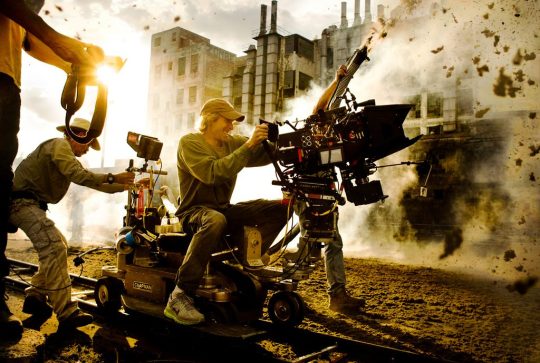
by Renzo Guevara
edited by Benjie Bernal
Everyone loves to hate on Michael Bay as a director. And as a director he loves to pander audiences with his films filled with racist jokes, homophobic statements, offensive stereotypes, and female objectification; and that’s just in the dialogue. But somehow all his films still manage to do really well, being one of the highest-grossing directors of all time as along with Steven Spielberg and Christopher Nolan. But unlike them, most of his films are practically universally frowned upon by critics in their reviews. Yet most of his films’ returns are in the hundreds of millions, while two of his recent iterations of the Transformers franchise hit billion-dollar milestones
Michael Bay once openly said that he “makes films for teenage boys.” But unfortunately for him, there isn’t any specific genre in film that’s specifically made for teenage boys. So regardless of what audience he makes his films for, it’ll still be part the action-adventure genre. But I guess that’s something we, the general audience, just have to bear. That said, one could then see it as a “popcorn flick”, which is the kind of movie where you just sit down and enjoy a few hours of mindless violence and nothing else. Good luck entering the cinema looking for a good dialogue or a seamless plot in a Michael Bay film. Sorry but you’re going to be disappointed. Better just watch the Academy Award Nominated Film in the other cinema.
But one thing Bay is reliable in, is making his movie eye-candy for his viewers through good use of effects. According to Bay, he makes sure that every shot he creates has some sort of ‘over-the-top imagery’ or a sense of scale to it. The camera work, the backgrounds, and the saturation of colors all contribute and are orchestrated by him to make the film as impactful as possible for the viewer. He makes shots “awesome” (how probably a teenage boy would describe it) by cramming in as many details as possible. This is something he got from making music videos early on before making his first feature film, Bad Boys (1995).

His frantic style of shooting is so unique; his crew famously describes it as “bayos” or “bayhem.” He is one of the few directors in Hollywood known for not utilizing storyboards to plan out his shots. Everything is done on the fly and in the spur of the moment. If done right, this technique can save money and time for the production but it’s risky because of the fact that it’s being directed then and there in the moment with less thought of that with a storyboard. Every angle, camera movement and visual element within the frame would have to be perfectly shot otherwise they would waste numerous resources that include pyrotechnics and explosives. Post-production is another challenge given the seemingly countless CGI effects that have to be inserted in the shots in accordance with the practical effects and actors. The amalgamation of the work involved creates a viewing experience unique only in his movies. The angles he tries to get isn’t what an average viewer perceives as “usual.” As Bay describes: “I’m always trying to put my camera in very unique places to give the audience a much more unique view.” His technique does give a greater depth, and possibly a more interesting perspective of the epic battles that transpire.
Along with his distinct eye for angles, another of his trademarks is his editing style that’s faster than the average Hollywood action flick. His use of minute details, which he shows only for a moment in an action sequence, in combination with consistent cuts in editing gives the audience little time to process the scene. These quick transitions between shots in combination with the stunning CGI add another layer of suspense that is felt by the audience. Bay’s combination of all these cinematic techniques works together to pull the attention of the audience, providing one immersive sweep of adrenaline that makes for a visually entertaining action sequence.
The original Transformers movie might have just been entitled “Transformers,” but it’s rather misleading. Instead of the war between Autobots and Decepticons from which the original cartoon was centered on and as suggested by the trailer, the first half of the movie is centered on Sam Witwicky and the war with his puberty. But the bad storytelling didn’t seem to matter to the audience as it was still a massive success. People packed theaters to watch cars and trucks that transform into giant alien robots fight that each other—in the end, that kind of awesome is what people really went to the movies for. The effects were nothing short of amazing, because of Bay’s combination of techniques that made scenes certainly eye-catching. The plots of the succeeding films might have periodically deteriorated (as if it was even good to begin with), however the visuals kept improving; blowing the public’s mind more and more after each iteration. It just goes to show how good Bay is in using a combination of practical effects and CGI.

Marketing is indeed important in making anything popular, and the bulk of the revenue his films rack is from foreign box office returns (outside the US). The 4th film in the franchise, Transformers: Age of Extinction, heavily capitalized because it shot the entire 3rd act in China, even casting a prominent star from the region. This, in combination with the massive launching event, proved to be massively successful, earning $858 million from foreign ticket sales, a big chunk of it coming from China. That said, people do perceive things as popular because of plenty sales and publicity; however, are all the things made popular worth being so?
Michael Bay isn’t that bad of a filmmaker and his revenues can attest to that, that is, if we measure one’s skill in filmmaking purely by profits. Bay is unique in that he and his films can embrace themselves in what they are: mindless eye-candy action films. With all the hindrances a film like that has like horrible writing, numerous plot holes, immature humor, annoying product placement, and hateful comments. Perhaps people purposely label his films as dumb “popcorn flicks” then proceed to watch them convinced that they’re just that because of an intrinsic need to just sit back and watch robots battle it out, with it ending with the planet almost getting destroyed and with a philosophically inspirational message from Optimus Prime. But I refuse to believe that the cinema audience’s wants have hit that kind of low. Is it really so bad, that it’s good? Or is it just bad?
Photo sources: 1 2 3
0 notes
Text
FLC 4: Science in 80s Sci-Fi

by Matthew Fernandez
edited by Benjie Bernal
It was a surreal, garish image: a man with ripped muscles and torn clothes stood defiantly in a sea of rubble— remnants of a fallen, crumbled city. Holding him on both sides were two scantily-clad, neon-skinned women. A robotic figure of dazzling chrome scanned in the background. Planets loomed in the crimson horizon. Bolts of lightning peppered the sky. The picture looked like it belonged on the cover of some pulp sci-fi magazine. To lecturer and self-professed cinteaste Ronald Cruz, it was a perfect depiction of “the zaniness, the weirdness, the craziness of 80s sci-fi. Because that’s what it is, really.”
Eighties science fiction, with its cyborg assassins, glowing space aliens, and not to forget time travelling sports cars strikes most as fantastical and over-the-top. But no matter how madcap the genre can get, you can’t have science fiction without, well, science. April 20th marked the Loyola Film Circle’s fourth and final Film Literacy Class for 2018, which saw Ronald Allan L. Cruz, Ph.D. (cand.) of the Biology Department discuss the real-life scientific concepts behind the decade’s iconic sci-fi flicks.

According to Cruz, the 80s era served as one of the highest peaks for science fiction. “Some of the best movies to come out in the genre came out during that decade,” Cruz noted. And the amount of regarded classics, as does the numerous subgenres these films have made, as Cruz mentioned, indeed exemplified this. The gritty and futuristic cyberpunk subgenre saw hits such as Blade Runner (1982) and RoboCop (1987). The sci-fi/horror hybrid that is body horror, or biological horror, drew audiences with vile imagery pervasive in David Cronenberg's 1986 remake of The Fly and in John Carpenter’s The Thing (1982). Extraterrestrials invaded the big screen as well, ranging from action gorefests Aliens (1986) and Predator (1987) to the more family-friendly E.T. the Extraterrestrial (1982). The concept of time travel also made a huge impression on moviegoers, with films like The Terminator (1982) and Back to the Future (1985) utilizing the idea as a major plot device.
The films Cruz mentioned epitomized the good and the peculiar in the genre, but what’s more interesting is the fact that they rely on some form of science to explain its main premise. Cruz continues, telling about how our world today is poised to become a mere reflection of the bizarreness present in 80s sci-fi. And that the amalgamation of man and machine as seen in RoboCop is not too far off when you consider people such as Kevin Warwick and his artificial, Internet-connected hand or Neil Harbisson’s synesthetic “eyeborg”. Even the nearly-human Replicants of Blade Runner seem closer to reality with the advent of 3D-printed organs and tissue.
Gene splicing, the process of incorporating foreign DNA to one’s own, could explain the horrific metamorphosis Seth Brundle undergoes after his DNA was mixed with a housefly’s. The humanlike morphologies of the xenomorphs, yautja, and even little E.T. can be stemmed not just from cost-cutting measures for costume designers at the time, but also from the Panspermia hypothesis, which speculates that life on Earth is but one of the planets “seeded” by a common source, implying that there are beings similar to us throughout the galaxy.

Finally, the far-out concept of time travel has produced numerous hypotheses on the possible principles it adheres to. Back to the Future’s take on time travel hinges on the concept of a single timeline that may be affected by changing past or future events, echoing the Butterfly Theory but foregoing the Novikov Self-Consistency Principle which establishes that the general flow of the timeline remains uniform no matter what events are changed, preventing paradoxes and alternate timelines.
The sheer amount of concepts Cruz explained is a big lot to take in, and that’s not even scratching the surface, stating: “There’s so much more I could say about science fiction in the 80s,” while enumerating the many, many other films he hasn’t touched upon. “There's so much more to watch,” he adds, “I encourage you—especially you being film buffs—[to] watch as many as you can.”
Cruz closed our discussion with the advice he’d often impart to his students in his Biology of Science Fiction class. “When I explain the science in science fiction, it's not meant to burst bubbles. [...] That's not the point. The point of understanding the science behind the science fiction that you watch is to gain a whole new [level of] appreciation,” Cruz said, finally concluding the lecture stating: “Because your appreciation for a piece of science fiction will be so much more enhanced and intellectual if you know the science behind it."
#matthew fernandez#benjie fernandez#event coverage#flc#back to the future#ronald cruz#prediksi skor#sci fi
1 note
·
View note
Text
Film Review: Three Billboards Outside Ebbing, Missouri

by Benjie Bernal
edited by Anna Cayco
*Spoilers ahead
Mildred Hayes (Frances McDormand) is a mother who puts up three controversial billboards outside of the mid-Western town of Ebbing Missouri for the lack of progress for the rape and murder of her daughter. The bright orange signs strikingly read: “Raped while dying”, “And still no arrests”, and “How come Chief Willoughby?” The film is a battle amidst emotions: with Mildred’s relentless hunger for justice—headstrong and motivated—versus a town that inherently supports her, but continuously calls for her to be more understanding, if not yield her efforts.

Throughout the film, Frances McDormand’s portrayal of an unhindered Mildred is flawless as the cops’ attempts to bully her are no match for her stone-cold personality as she continuously pokes innuendos of the cops’ reputation for brutality, making the dynamic between her and the cops serious, while at the same time oddly playful and amusing. But when Bill Willoughby (Woody Harrelson) appeals to Mildred for pity disclosing that he has cancer, Mildred, having already developed an ruthless sense of apathy, ignores his appeal. And just as the movie reaches a stalemate between Mildred and the cops’ for the billboards, Bill, with the harmless intention of not wanting to have his family have a bad memory of him dying of cancer in the succeeding months, kills himself, therefore framing Mildred’s billboards as the cause of Bill’s suicide. As a marvelous battle of violent emotional reactions is set off across the town, it’s clear that Mildred isn’t the only one angry in the town anymore: it’s everyone— at her.
In this battle, writer and director Martin McDonagh’s screenplay shines, overtly highlighting the police’s racist, homophobic and violently impulsive tendencies. This is through the character of Jason Dixon (Sam Rockwell), who’s humorously known throughout the town as one of its racist and impulsive cops. Sam Rockwell amazingly absorbs his role as the stereotypical impulsive moron, who at one point goes as far as brutally assaulting and then throwing the billboard manager out a window in a beautiful one-take sequence that speaks multitudes about the social issue. But Jason’s Character isn’t just for the movie to make its political gesture. Martin at the same time ingeniously highlights Jason’s relationship with his mother that despite being old and frail, we see that hate is indeed something that’s enculturated and learned. But the absolute highlight of the film is the letter sent by Bill Willoughby before his death that sends Jason Dixon on a path of redemption practically resembling Darth Vader’s in the last moments of Star Wars: The Return of the Jedi (1983). Jason gets an intense visible change in his character, and not just because he himself gets brutally disfigured, but because he finds new emotions to fuel his actions and the film portrays this shift with a correlation in how he treats and gets received by people.
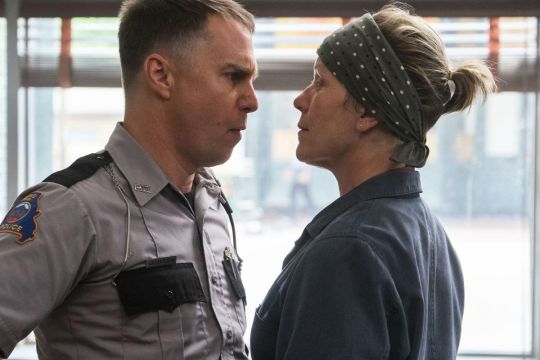
Three Billboards is it doesn’t just simply follow along in Mildred’s affliction of seeking justice or attempt to highlight the pain of her loss— which the film actually does well with the peculiar dialogues she has with herself, a flashback sequence, and the portrayal of a scarred family — but also emphasizes the senseless anger and tendency for violence and disparity people have when they deal with loss. Dormand and Rockwell's performances encapsulate the complexity of their grief. No wonder they both won Best Actress and Supporting Actor respectably in this year’s Academy Awards. Two two’s propensity to keep on creating conflict are contingent, making the battle in, or more specifically of, the Three Billboards a joy to watch.
Photo sources: 1 2 3
0 notes
Text
War is a Mess but this Movie isn’t
by Benjie Bernal
edited by Franco Luna
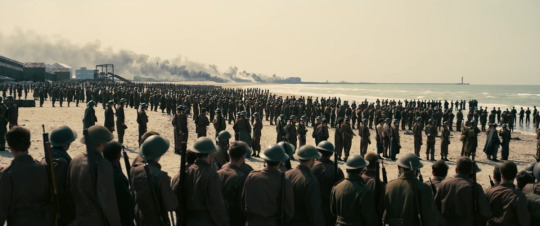
After three long years of waiting for another Christopher Nolan film, fans such as myself are wonderfully greeted with his take on the allied evacuation of Dunkirk during the early phases of World War II.
Early on in his directing career, Nolan always had a keen mind for storytelling as a lot of his earlier films feature unconventional narratives that aren’t chronological. One of his earlier films which people have overlooked but has recently been gaining traction is Memento (2000). It features a character with amnesia, and revolves around him retracing his steps whilst discovering shocking and misleading revelations, making for a narrative that reveals key plot twists at will, all coming down as a gripping, refreshing take in the crime genre.
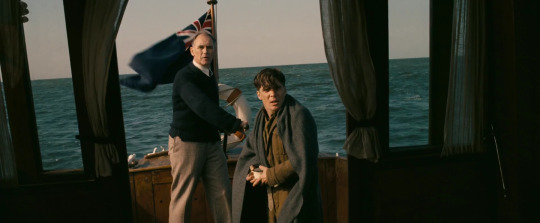
Nolan’s films are often his own personal takes of the usual genres such as action-thrillers and sci-fi, while incorporating his unconventional style of storytelling that makes for an immensely refreshing cinematic experience. However, there’s something to Dunkirk that’s special in comparison to his previous films. It’s that this time, aside from Nolan once again demonstrating his masterful control of the audience’s perception of time, he pushes it to another level as he delivers a narrative that isn’t reliant on dialogue or characters to achieve dramatic effect. Instead here he pushes what the fundamentals of film can do, it being: visuals, sound and editing.
With his sensational use of time and editing, its almost poetic (and just plain creative and original) how Nolan envisioned the sequencing of events in Dunkirk especially with regards to the ending where all three of the film’s story arcs finally intersect. It’s reminiscent of the ending of The Dark Knight Rises (2012) where one of the characters narrate a closing statement, the picture cuts from one emotion-evoking shot to another. In Dunkirk, the experience is a montage of the beautiful resolutions of all three storylines, while one of the characters narrates Winston Churchill’s iconic speech of the time.
With the beautiful ending it has, Nolan has managed to circumvent the idea that a war film has to conform to the ‘Brothers in Arms’ style of depicting soldiers in war where the film has tell a story of the bond soldiers share in warfare. This is essentially what we find in Saving Private Ryan (1998), and TV series such as Band of Brothers (2001), and The Pacific (2010). Here, Nolan chooses not to depict the hardships of soldiers in warfare through their interconnected relationships. Instead, he uses a tells the narrative through a lens that immerses the viewer within the event with a special emphasis on sense and realism, portraying from multiple perspectives an entire army in desperation— or how the film makes it feel— deliverance. This is done through the beautiful synergy between all the movie’s cinematic elements. On how the picture cuts from one storyline to another, or how it uses suffocating moments of tension in combination with a heart-wrenching score to create an experience that feels as constricting as being in the horror yourself.
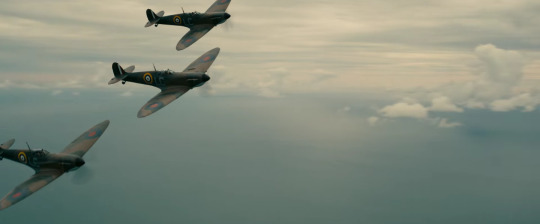
The film runs for barely two hours, yet leaves you with very little time to breathe as it feels like every moment is brimming with tension. Even seemingly mundane scenes are tense as viewers can seldom feel the emotional transition from violent to calm because of scenes being strung together by Hans Zimmer’s heart-wrenching musical score whose presence is continuously felt throughout the film.
Even right off the bat viewers are immersed into chaos, with loud gunshots reverberating in a suburban street, and as soon as you feel you’ve found respite, the ear-piercing sound of German dive-bombers making a pass envelops. Throughout the film the cycle of having a false sense of momentary refuge only for it to continuously be shattered is relentless. At the same time, every sound you hear is accentuated by an attention to detail and realism, from the sound of machine guns firing heard from inside a airborne Spitfire, or bullets hitting the hull of a beached ship, Dunkirk’s sound design is crisp, loud and emotionally jarring.

With this, Dunkirk has been nominated for eight Academy Awards, ultimately winning Best Sound Mixing, Best Film Editing, and Best Sound Editing. Its other nominations may not be as good enough to be distinguished, but the amalgamation of individual achievements in Dunkirk’s directing, cinematography, music score and production design has made it a memorable testament to the power of visuals, sound and editing in storytelling.
Photo sources: 1 2 3 4
1 note
·
View note
Text
Wakanda Forever: A Black Panther Film Review

by Joel Anthony Lim
edited by Benjie Bernal
Black Panther (2018), the latest film in the blockbuster Marvel Cinematic Universe, is quickly becoming a cultural phenomenon. As one of the comic book creations of the powerhouse duo Stan Lee and Jack Kirby, Black Panther/ T’Challa is the first superhero of African descent, which was a revolutionary concept in the 1960s. The character was brought to life with a memorable arc that was highlighted in spite of being amidst the massive ensemble of Captain America: Civil War (2016) with a magnetic performance from Chadwick Boseman. And now, with the arrival of his solo film, kids can now look up to a new kind of hero that truly represents people of color in film.
Black Panther follows the titular character adjusting to his rule as king of Wakanda, a fictional African isolationist nation that’s the most technologically advanced country in the world because of their abundance of the metal vibranium. T’Challa’s unprepared, as he’s forced into his role after his father’s violent demise in Civil War. Now, he has to step up as a leader to both his family and friends, just as several enemies emerge to challenge his rule, such as arms dealer Ulysses Klaue (Andy Serkis) and the mysterious mercenary Erik Killmonger (Michael B. Jordan).
Director Ryan Coogler’s passionate direction of Black Panther, with help from Joe Robert Cole in penning the screenplay, gives vibrancy to its all-black cast and the beautiful, idyllic world of Wakanda. Mirroring how Stan Lee and Jack Kirby challenged racial barriers by creating the Black Panther in the height of racial issues, Coogler flips up the formula that has long permeated the Marvel Cinematic Universe (and most of today’s blockbusters) by delivering a movie that offers both the thrill of most MCU films have while diving into topical and relevant issues.

Wakanda is filled with striking color and beauty, filled with costumes by Ruth Carter and gorgeously shot by cinematographer Rachel Morrison, who’s the first female to be nominated for an Oscar for Best Cinematography for Mudbound (2017). From the vivid landscapes, the pouring waterfalls and the lively streets, it’s Afrofuturism portrays a massive appreciation and love for African culture. The vibrant action of the film also stands out with the car chase scene in South Korea, to the climactic final battle in the fields of Wakanda, to a memorable tracking shot in an Korean casino that rivals the intense one-shot boxing match in Creed (2015). Adding to the excitement is Ludwig Göransson’s majestic score and a soundtrack that features Kendick Lamar’s energetic style.
The film’s characters are both fully-realized with their own personal motives & distinct personalities and portrayed with dedication by a knockout cast. Winston Duke, Martin Freeman, Forest Whitaker and Andy Serkis are given great characters to work with, with the latter bringing both the menace and fun in Ulysses Klaue, who’s armed with both an arm cannon and a snark to boot, and he plays it with such glee that’s it’s enjoyable to see him wreak havoc while plugging his SoundCloud account.

All praises go to the eclectic number of strong women that populate the cast of Black Panther, from the legendary Angela Bassett as Queen Ramonda to Oscar winner Lupita Nyong’o as the pacifist spy (and T’Challa’s ex-girlfriend) Nakia. Letitia Wright is rightfully the breakout star of the film as the spunky and quirky Shuri, T’Challa’s sister and gadget-provider. Best of all is Danai Gurira as Okoye, the badass and mesmerizing head of the all-female Wakandan bodyguards known as the Dora Milaje.
Mad props to Chadwick Boseman, who doesn’t need the snark of other MCU heroes to mask his character’s insecurities and fears in finding his purpose as Wakanda’s new leader, and this brings a refreshing sincerity that sets him apart from his superhuman peers. And all the praise goes to Michael B. Jordan, who delivers an all-time great villain with Killmonger. It helps that Jordan is Coogler’s muse from all his films, and Jordan brings a terrifying intensity to Killmonger that it’s disarming yet convincing when he unveils the morality and heartbreak behind the relentless killer.

Black Panther is a well-made entry into the Marvel Cinematic Universe that delves into relevant issues, celebrates African culture and brings a fresh perspective in a movie universe we’re all too familiar with. And what makes it great is that there’s something here for everyone. For the casual viewer, it’s a fun and unique blockbuster. For fans of the comics, it’s fulfilling to see an iconic character finally make it on screen. And lastly for people of color, it’s about time we see them as the badass warriors who kick ass, inventors that rival Tony Stark’s, and heroes who make a difference both in the MCU, as well as real life.
Photo sources: 1 2 3 4
0 notes
Text
A Tale Under the Stars

by Benjie Bernal and Miguel Santiago
edited by Joshua Chan
Fairytales operate on formula and archetypes that cement their position in one’s subconscious. Imagine – a distant land untouched by dust and grime with rolling green hills and living stars spelling out a love story as if it were destiny. A world where only heroes are allowed to reign with magical creatures roaming around freely. Ultimately, such realms born of our imagination are connected to our hearts’ desires, where we are all princes and princesses seeking for our own happily-ever-afters.
Under the Stars (UTS), an annual event organized by the Loyola Film Circle (LFC), then provides an opportunity for us, a community of dreamers, to gather and commemorate our stories. Held on the 15th of February from 7 PM until well past midnight, people riding the high of the infinite shades of love gathered together at Bellarmine Field for a fun-filled night presented with the theme of fairytale dreams come true.

Seve Carlos, 2 AB Com, appreciated how “the whole theme and the overall event [were] consistent with everything,” noting particularly the marriage booth and the LED balloons. Erika Tempongko, LFC’s President, also expressed her delight with this year’s theme: “What I enjoyed about the fairytale theme is that it’s relatable to all types of people. Even though Under the Stars has primarily been a romantic event, we have been trying to branch out to encourage people to invite their friends and family as well.”
In collaboration with the Ateneo Musician’s Pool (AMP), the event featured performances and films dedicated to immersing the crowd, complemented with unparalleled enthusiasm from hosts Rafa Chua, Howi Bakunawa, Ian Pangilinan, and Karla Habaluyas.

Musical performances this year featured the following acts: Last Name Basis, Dirty Old Sneakers, Bianca Abad, Our Inflatable Friends, Lance Salazar, Kali and Casey, and Bottom Space. Three student-produced films were also screened this year. These were Newbie Film Winner “10-Minute Break”, IsaPelikula Film winner “Jenny and the Staff of Magis”, and “And, Again”, the official UTS film produced by LFC’s ProdCore team. Lastly, the closing feature of this year’s Under the Stars was fitting to the theme of the whole event – the 2007 Disney musical-comedy “Enchanted” (d. Kevin Lima).

The mesmerizing collision of fantasy and “reality” in Enchanted offered a fitting conclusion to a night that followed the timeless formula of a fairy tale. And although there were some imperfections, they did nothing to extinguish the magic as laughter and love filled the air. In fact, after the clock struck twelve, we did not eradicate the lands of our stories; rather, we tucked them in storybooks big enough to hold galaxies. While the next time to gather and commemorate our stories once more on a beautiful night in a familiar field seems far, for now, we continue to live out our stories, patiently waiting to relive that magical night under the stars.
Note: Under the Stars 2018 was sponsored by McDonald’s and Junel Lights and Sounds Rental. Official media partners included Monster RX93.1, When in Manila, and Young Star.
0 notes